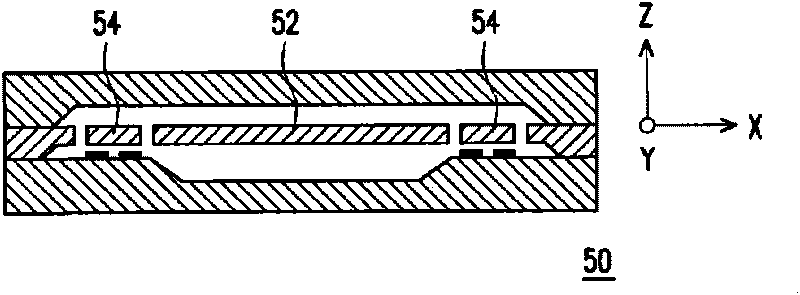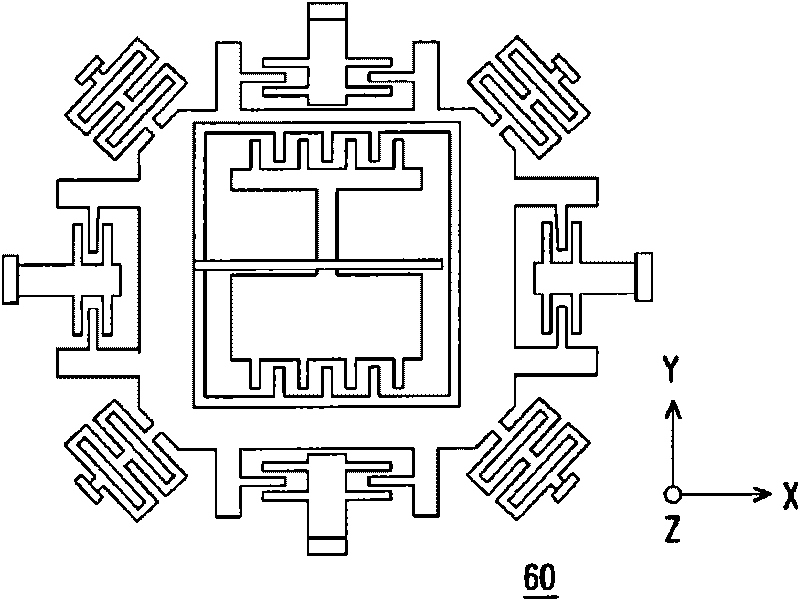Multi-axis capacitive accelerometer
An accelerometer, capacitive technology, applied in the design field of multi-axis capacitive accelerometer, can solve the problem of reducing the effective area utilization rate and so on
- Summary
- Abstract
- Description
- Claims
- Application Information
AI Technical Summary
Problems solved by technology
Method used
Image
Examples
Embodiment Construction
[0105] Figure 4 It is a top view of a multi-axis capacitive accelerometer according to an embodiment of the present invention. Figure 5 for Figure 4 Sectional view along line I-I. Please refer to Figure 4 and Figure 5 , the multi-axis capacitive accelerometer 1000 of this embodiment includes a substrate 1100 and a structural layer 1200 . A plurality of sensing electrodes 1120 are disposed on the surface 1110 of the substrate 1100 . The structural layer 1200 includes a plurality of fixed seats 1210, a first mass 1220, a first elastic structure 1230, a plurality of fixed sensing masses 1240, a second mass 1250, a third mass 1260, a second elastic structure 1270 and a third mass. Elastic structure 1280.
[0106] The first mass 1220 is disposed above the surface 1110 of the substrate 1100 , and the first mass 1220 has a central axis 1222 and a first opening 1224 and a second opening 1226 inside the first mass 1220 . The first opening 1224 and the second opening 1226 ar...
PUM
 Login to View More
Login to View More Abstract
Description
Claims
Application Information
 Login to View More
Login to View More - R&D
- Intellectual Property
- Life Sciences
- Materials
- Tech Scout
- Unparalleled Data Quality
- Higher Quality Content
- 60% Fewer Hallucinations
Browse by: Latest US Patents, China's latest patents, Technical Efficacy Thesaurus, Application Domain, Technology Topic, Popular Technical Reports.
© 2025 PatSnap. All rights reserved.Legal|Privacy policy|Modern Slavery Act Transparency Statement|Sitemap|About US| Contact US: help@patsnap.com



